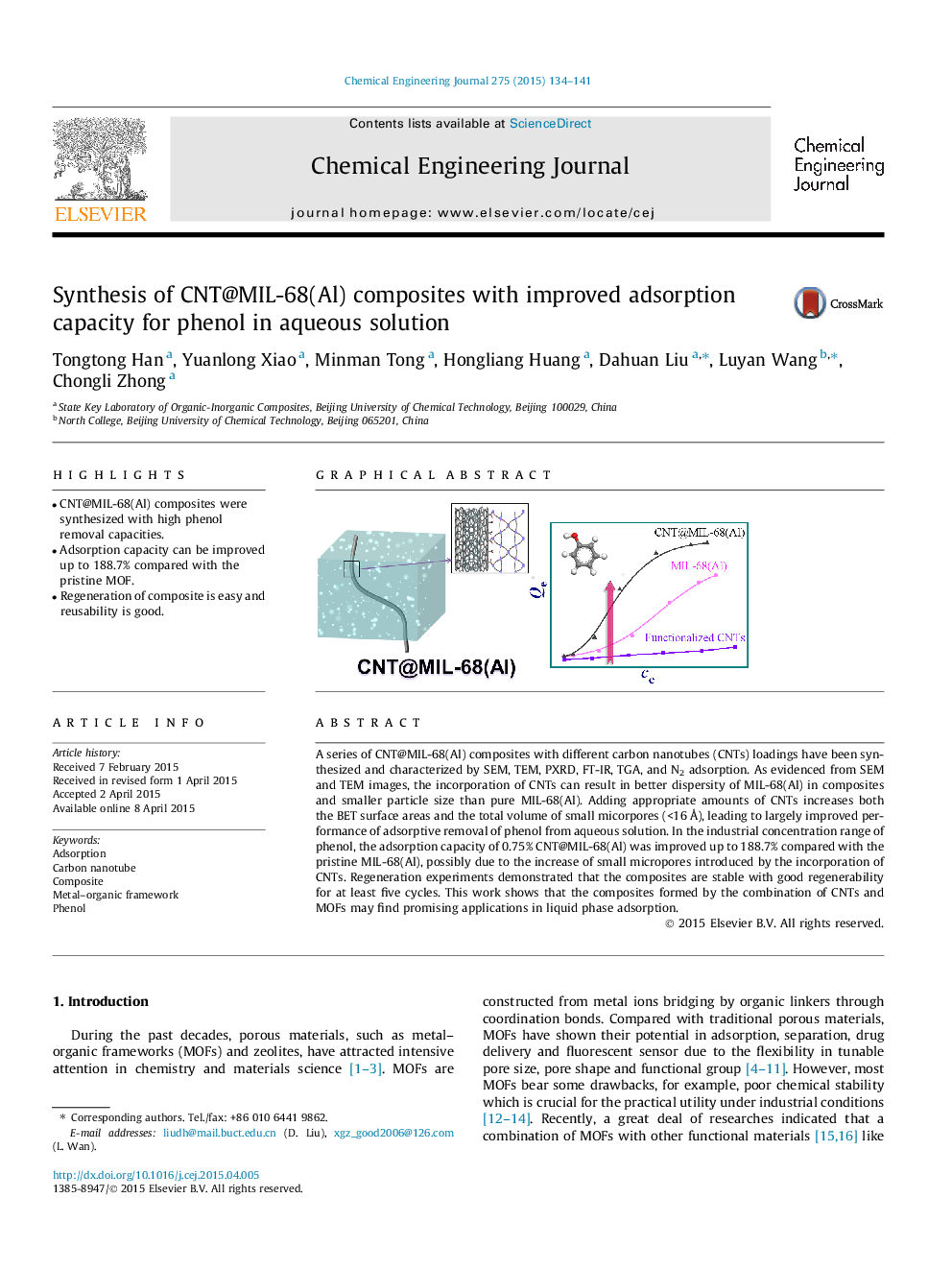| کد مقاله | کد نشریه | سال انتشار | مقاله انگلیسی | نسخه تمام متن |
|---|---|---|---|---|
| 146258 | 456365 | 2015 | 8 صفحه PDF | دانلود رایگان |

• CNT@MIL-68(Al) composites were synthesized with high phenol removal capacities.
• Adsorption capacity can be improved up to 188.7% compared with the pristine MOF.
• Regeneration of composite is easy and reusability is good.
A series of CNT@MIL-68(Al) composites with different carbon nanotubes (CNTs) loadings have been synthesized and characterized by SEM, TEM, PXRD, FT-IR, TGA, and N2 adsorption. As evidenced from SEM and TEM images, the incorporation of CNTs can result in better dispersity of MIL-68(Al) in composites and smaller particle size than pure MIL-68(Al). Adding appropriate amounts of CNTs increases both the BET surface areas and the total volume of small micorpores (<16 Å), leading to largely improved performance of adsorptive removal of phenol from aqueous solution. In the industrial concentration range of phenol, the adsorption capacity of 0.75% CNT@MIL-68(Al) was improved up to 188.7% compared with the pristine MIL-68(Al), possibly due to the increase of small micropores introduced by the incorporation of CNTs. Regeneration experiments demonstrated that the composites are stable with good regenerability for at least five cycles. This work shows that the composites formed by the combination of CNTs and MOFs may find promising applications in liquid phase adsorption.
Figure optionsDownload as PowerPoint slide
Journal: Chemical Engineering Journal - Volume 275, 1 September 2015, Pages 134–141